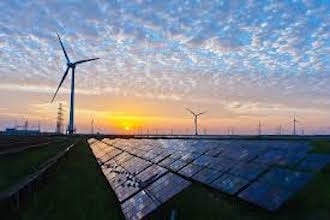Westpac Banking Group has made its first major push into renewable energy, quietly announcing a tender for 155GWh of renewable power a year – the equivalent of around 50MW of wind or solar capacity.
Westpac is looking for proposals for the supply of renewable energy – from wind, solar, or hydro – to help power its operations that include data centres, branches, commercial offices and ATMs via a power purchase agreement. The tender closes on May 30.
“The Westpac Group will be seeking proposals from third party electricity retailers and project developers for the purchase of up to 150 GWh annually of renewably generated electricity with the objective of entering into a medium to long-term Power Purchase Agreement (PPA),” it says.
“It is expected this electricity will be sourced from either wind energy, solar photovoltaic or hydro-electric generated sources.”
This is the first major Westpac push into renewables, but the bank joins a growing corporate push into renewable energy, a shift that recognises the cheaper cost of wind and solar.
The corporate market is also considered crucial for the future of large scale wind and solar developments in Australia, particularly given the uncertainty over future policy and the federal government’s refusal to seek further emissions reductions in the sector.
Some of Westpac’s rivals have already made the move into renewables, with ANZ joining Telstra and CC Amatil to contract the first 240MW stage of the 429MW Murra Warra wind project in Victoria. Telstra has separately signed a contract for a 70MW solar farm in Queensland.
Other corporates are also moving. Sun Metals is soon to open a 116mw solar farm that will underpin expansion of its zinc refinery in north Queensland, while Sanjeev Gupta’s GFG Alliance is looking at 1GW of solar and storage to power, and slash electricity costs, for the Whyalla Steelworks.
Nectar Farms is soon to begin construction of a 179MW wind farm and 20MW/34MWh battery storage installation near Stawell, part of a $550 million project that will see what will be the country’s biggest vegetable greenhouse entirely powered by renewables.
Westpac itself noted in a report released in December that up to 20 different Australian companies were tendering for renewable energy contracts, and it appears to be taking its own advice that renewable PPAs offer a significantly cheaper option than standard grid contracts.
In that report, Westpac noted that businesses were being slugged between $120/MWh and $350.MWh for power from the grid, when the costs of solar, for instance, had fallen to as low as $65/MWh.
New so called “firming” contracts are also emerging that allow for the output of solar to be balanced with other supply options.
“There is a wave of corporates who are waking up to the new world of energy prices and are shocked by the rise in their energy bills,” Westpac’s head of project finance Jason Tranter said at the time.
“My view is that the underlying move to renewable energy is here to stay, and that new technologies are taking over from the old in the energy generation market.”
Now Westpac is doing the same. In its Climate change position statement and action plan 2020 document, produced late last year, Westpac said it was setting a “science-based target” to reduce its emissions by 9 per cent by 2020, and by 34 per cent by 2030.
It also set out to “actively reduce” the emissions intensity of its exposure to the power generation sector – to 0.30 tCO2e/MWh by 2020;
to only finance new power generation if it reduces the emissions intensity of the grid in which the generator operates; and
to only support direct lending to an existing coal red generation facility if the facility is required for system reliability and/or afforrdability, or is not for the purpose of expanding the capacity or extending the life of the facility.
It also vowed to increase its target lending exposure to climate change solutions from $6 billion to $10 billion by 2020, and to $25 billion by 2030.











